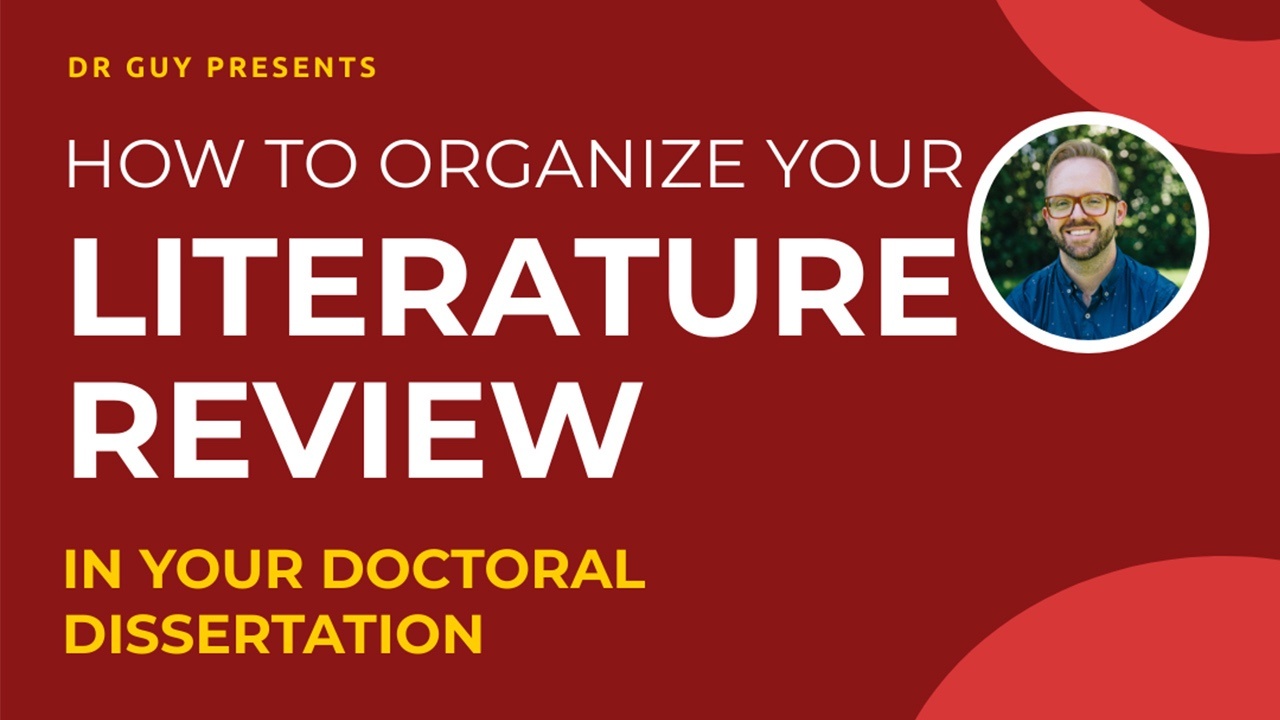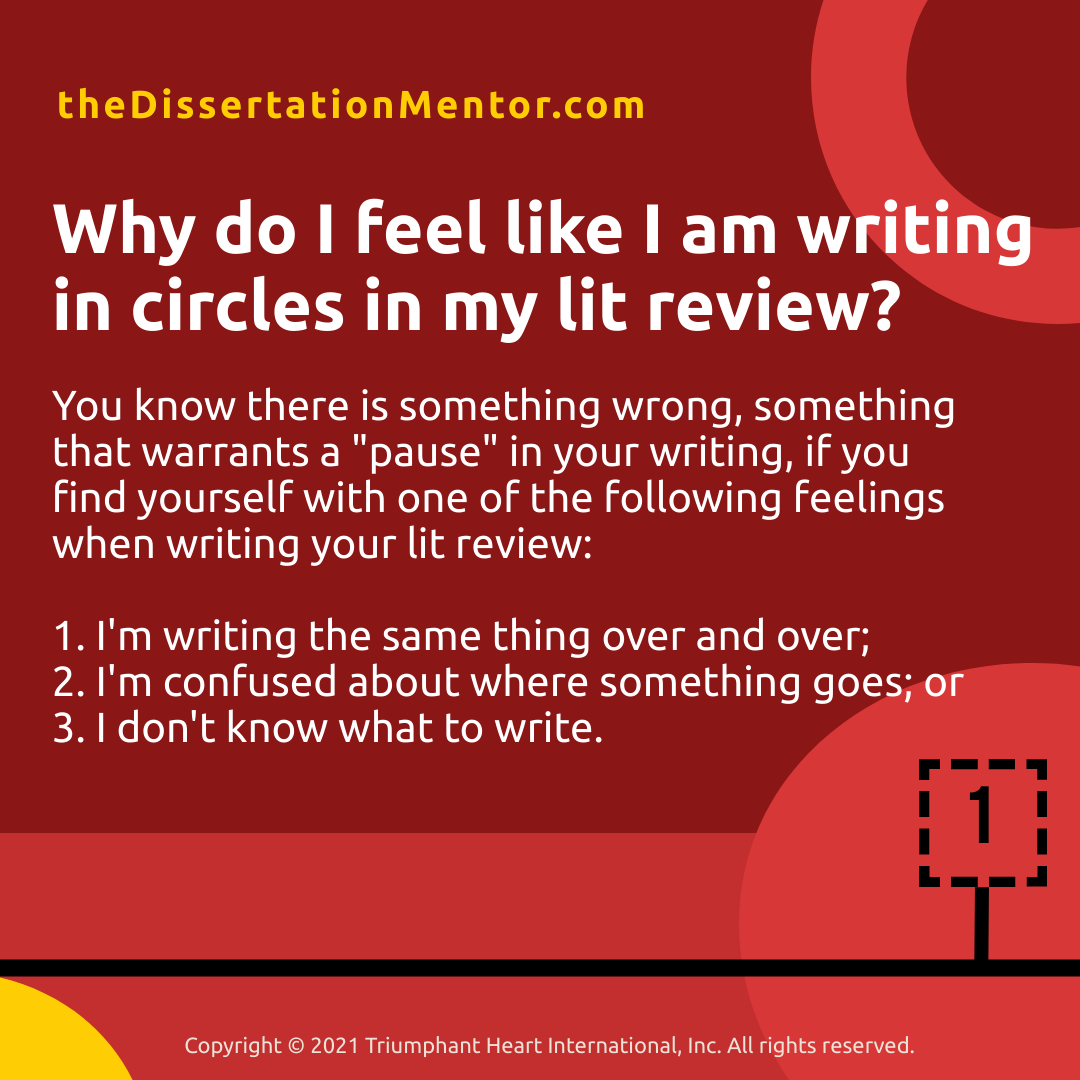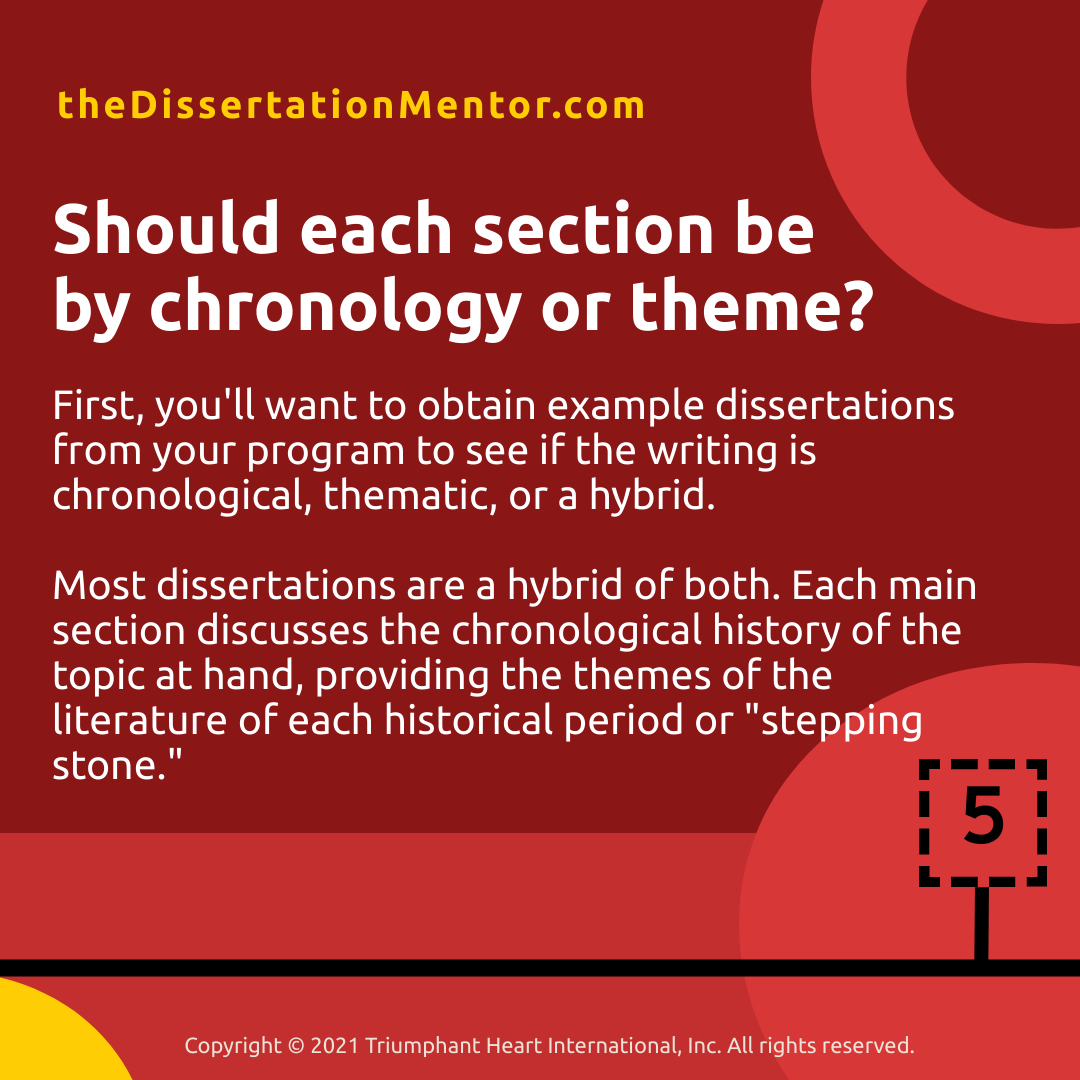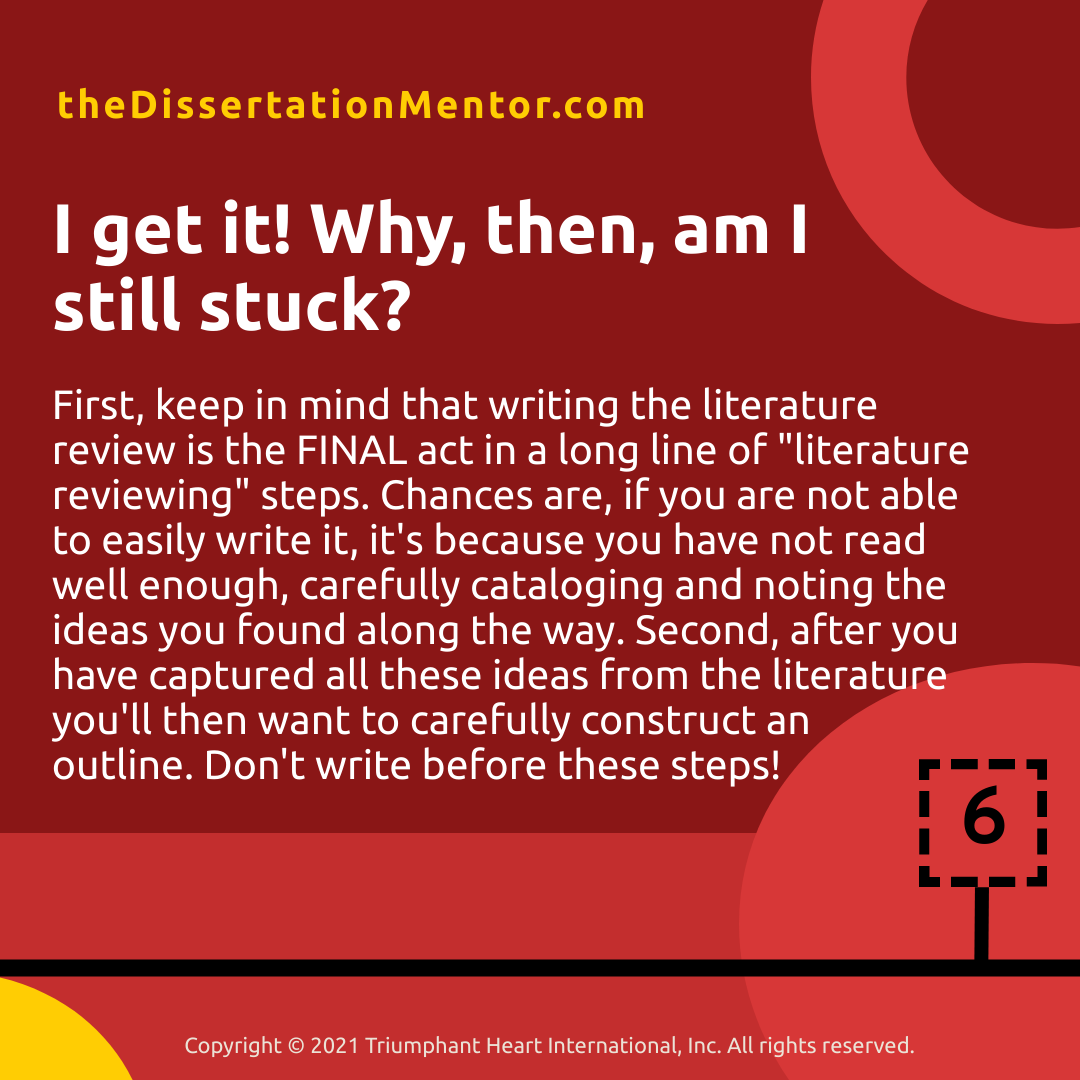How to Organize Your Literature Review in Your Doctoral Dissertation

Hi Dissertation Writer! If you have found your way to this article, you are probably feeling lost. Not only are you disoriented, but you are "lost" in the worst way: You are lost when it does not have to be this way! I'm Dr. Guy, author of "The Dissertation Warrior," and founder of the world's most comprehensive online dissertation writing training for doctoral students: The Dissertation Mentor® Accelerator Program.
I'm running my Dissertation Summer Camp very soon. You should definitely attend! Now, onto the article.
Purpose of this Article
The literature review is the mountain upon which many doctoral dreams die. If you speak to once dissertation writers who "stopped" pursuing their doctoral degrees, you'll rarely hear that they stopped during data collection, data analysis, or in writing their final chapters. Likewise, you'll rarely hear of a doctoral student that successfully wrote their opening chapters, including their literature review, only to lose steam when finalizing their data collection plans. Thus, the literature review is a dangerous place to get stuck – as many never get unstuck.
Most likely, the challenges you face in the literature review are NOT what you think they are! This article aims to help students who are experiencing writing symptoms that necessitate a "pause" in their writing. So, if you find you are experiencing one of the following, it's time to put away the keyboard and read this article.
Symptoms of impending literature review disaster include:
- I'm writing the same thing over and over again;
- I'm confused about where something goes in my literature review; and
- I don't know what to write.
If you have had any of the above feelings, this article is for you!

How should I organize my dissertation's literature review?
The prerequisite item to organize your literature review is your study's purpose statement (or "aim"). The purpose statement lays out the who, what, when, where, and how of your research. If you have not yet written one, it's time to write it! I have an informative, step-by-step video here that can help with that.
The purpose statement functions as a compass pointing to the True North of your study. Any time you feel confused in your dissertation process, the purpose statement is a great place to which to return. Let's look at an example purpose statement to see what structure it offers your literature review:
The purpose of this qualitative case study is to explore the leadership approaches of CEOs in their first five years at publicly held, top-ten Fortune 500 companies in the U.S. in 2022.

Notice that the purpose statement provides the exact headings for the literature review:
The purpose of this qualitative case study is to explore the leadership approaches of CEOs in their first five years at publicly held, top-ten Fortune 500 companies in the U.S. in 2022.

Accordingly, the main headings might be:
- Leadership Approaches
- Chief Executive Officers (CEOs)
- Publicly-Held, Top-Ten Fortune 500 Companies.
This process of deriving one's literature review headings from the purpose statement works well in several ways. First, since the purpose statement has all of the elements required to understand the gist of what is being studied, where (or with whom) it's being studied, and how it's being studied, all the major areas of knowledge or theory present! Think about your own purpose statement: if you adopted the major "nouns" of your purpose statement as the main headings of your lit review, could any "missing" topics be organized "under" these main headings as subheadings? Indeed, the answer is, 95% of the time, yes!
Another way that this process works well is that it allows for easy writing. Everything about leadership, leadership theory, and leadership approaches end up under one heading. All research about CEOs ends up in its own heading. The research about those Fortune 500 companies ends up in their own heading too. Notice how beneficial this is: There is little or no chance that topics will crisscross or entangle with one another. Have you ever had this feeling while writing like "I feel like I am talking about too many things at the same time?" Well, this strategy removes that possibility entirely.

Should each main section of the literature review be by chronology or by theme?
A natural first step in planning your literature review is consulting other dissertations from your doctoral program to understand the "norm" of what is expected. However, don't let the browsing of a few dissertations set your mind rigidly toward a single viewpoint.
Most literature reviews in doctoral dissertations are a hybrid approach of both chronology and thematics.
On the one hand, each main topic of the literature review is discussed in chronological, historical order, but, on the other hand, often by theme at the same time. For example, when talking about leadership theory, a dissertation writer is often welcomed to discuss the different leadership theories in order of historical appearance. When it comes to talking about each individual leadership theory, the writer will often switch to a thematic approach, discussing the views of multiple authors at the same time. In outline form, you could see this approach as follows:
- Leadership Approaches
- Early Leadership Theories
- Theme A
- Theme B
- Leadership Theories in the 20th Century
- Theme A
- Theme B
- Contemporary Approaches to Leadership Theory and Research
- Theme A
- Theme B
- Theme C
- Early Leadership Theories
Using the outline above, notice that the leadership theories are discussed in chronological order. However, within each of the periods of history, themes during that time period are discussed. The above is a potent hybrid approach to literature review writing.

I get it! Why, then, am I still stuck?
"Conducting" a literature review is not the same thing as "writing" a literature review. The writing phase of a literature review is the final 10% of the work! Thus, the written report you call a "literature review" is the FINAL ACT in a long line of "literature reviewing" steps.
Before writing the literature review, you have to conduct it. This means you'll spend the vast majority of your time gathering articles, reading and annotating them, capturing worthwhile quotes, and outlining what will, eventually, become your literature review writing. When you attempt to skip these steps, you are robbing yourself of the exact materials you need to finish this project. Without doing these steps, you have almost no hope of finishing your literature review. Even if you could create a literature review without doing the actual work of a literature reviewer (as described above), you most likely will be met with revision round after hellish revision round with your advisor and committee. Save yourself from the neverending nightmare of revision rounds by doing the necessary work to complete the literature review.

Parting Words
Most doctoral students that come to my doorstep seeking help on their literature review think they have a "writing problem." A vast majority of the time, they have, in fact, a "reading problem" that cannot be solved solely through strategizing around their writing. They have to sit down and do the work required to have the "materials" that will be used to build the literature review. I hope that you will not short-change yourself in the chance to finish.
If you found this article helpful and want to check out my other resources, you can find them below and always at my website at www.theDissertationMentor.com
If you want to pour jet fuel on your dissertation writing process, consider joining me in my flagship program.
Further Learning
Read: Chapters 22, 30-40 of The Dissertation Warrior
Watch: How to Organize Your Literature Review
Watch: How to Write a Literature Review -- Dr. Guy E White
Watch: How to Write a Purpose Statement for My Dissertation
Watch: How To Write a Literature Review - Part 2 - Am I Done?
My Program: The Dissertation Mentor® Accelerator Program
Get all Dr. Guy's free stuff in one email! A dissertation treasure!
It's my purpose on this planet to help doctoral dissertation writers finish so they can graduate. I'll send you all my free stuff in one email. Then, I'll send you more amazing stuff as I create it! By signing up for our freebies, you agree to abide by our terms and privacy policy.



